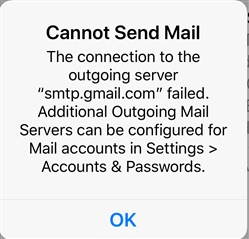With our iPhones connected to our home XG network, we cannot send emails (but we do receive emails just fine). What can I do so we can send emails?
If I connect to my VPN, use LTE or use my work Wifi, my iPhone can send emails just fine.
I have a pretty much "out of the box" XG setup and this is a recent XG installation.
This is the message on the iPhone that we get when we try to send from our home network with XG firewall:
This thread was automatically locked due to age.



